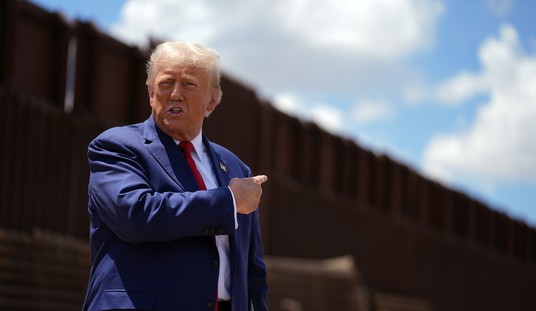The latest report from IAEA on the inspection regime for Iran’s nuclear program has landed with something of a thud. Fifteen of the report’s 25 pages are devoted to an annex outlining “Possible Military Dimensions to Iran’s Nuclear Programme,” which is the language by which IAEA has long referred to the possibility of nuclear weapons development by Iran. But as Allahpundit and others have observed, we, um, knew all this.
And, really, we did. The intelligence from what IAEA calls the “alleged studies,” which makes up the bulk of the discussion in the latest report, was known to IAEA in 2005, and to Western intelligence agencies, including US national intelligence, earlier than that. To be clear: US intelligence made the assessments in the infamous 2007 NIE in the full knowledge of the information in the “alleged studies.” The information pertained to activities prior to early 2004. And it still forms the basis of IAEA’s new assessment. Every substantive point in the report has been known to the public for at least two years; most of it for even longer. Some of the details are new.
(For those who don’t follow this closely, the “alleged studies” are intelligence reports on the Iranian nuclear program forwarded to IAEA by UN member states, including the US, in early 2005. The convention in IAEA documents is to refer to them as the “alleged studies,” which avoids conveying an official opinion on their accuracy or veracity.)
IAEA refers, for example, to the possibility that the Parchin weapons development facility, on the southeast edge of Tehran, is being used for nuclear-related high-explosive testing, a likelihood which US intelligence suspected prior to September 2004. IAEA was allowed to inspect a portion of the Parchin facility in 2005, but was not given access to all the areas requested (including the area implicated below), and has not performed an inspection since.
The 8 November report alludes to information suggesting Iranian work on a multipoint initiation system for detonating a nuclear warhead (see section C.6 of the Annex, “Initiation of high explosives and associated experiments”). Yes; that intelligence (along with IAEA’s knowledge of it) was reported two years ago by the UK Guardian’s Julian Borger, who provides a helpful link to his original piece in an article published Monday. As Borger notes, IAEA referred obliquely to the same intelligence as early as May 2008, which would be three and a half years ago now. The Iranian experiment itself, according to the foreign intelligence referenced by IAEA, occurred in 2003 (see paragraph 43 on page 9 of the Annex).
The “new” data point getting the most media attention is the report’s discussion of imagery of the Parchin facility showing a “bus-sized steel container” assembled there, possibly for high-explosive testing. As indicated at the WaPo piece linked above, analysts at ISIS (Institute for Science and International Security) could not immediately corroborate that finding to the Post. But however recent its detection, the container cannot be said to be new. According to paragraph 49 on page 10 of the Annex, the container was constructed, and a building erected around it, in 2000.
By itself, this development doesn’t come close to proving that Iran has a nuclear weapons program. If you were disposed to ignore (or explain away) the pile of other evidence outlined in the 8 November Annex, you would be justified in ignoring this too. A bus-sized steel container could be a number of things. It’s not a tie-breaker.
If, on the other hand, you have been taking the previous evidence seriously all along – the accumulated data points from 2003 to 2011, most of which have been known to the public for at least two years, and some for more than six – you would be justified in regarding the steel container as additional evidence. It would bolster your case, but it is neither decisive nor a sudden pretext for urgency.
There is a bemused skepticism being evinced about the timing of this particular IAEA report – and the media hype surrounding it – at many blogs where military strikes on Iran are generally opposed. I appreciate their skeptical perspective. What IAEA has done in this report is showcase, in a newly pessimistic analytical context, a lot of data points we have known about for years. Why now?
It is an interesting study in, well, something, to compare some very recent headlines in the Washington Post coverage of the Iranian nuclear program. As recently as 17 October, WaPo characterized the program in these terms:
Iran’s nuclear program suffering new setbacks, diplomats and experts say
The language of the story started out dolorous and went downhill from there (all emphases added):
Iran’s nuclear program, which stumbled badly after a reported cyberattack last year, appears beset by poorly performing equipment, shortages of parts and other woes as global sanctions exert a mounting toll, Western diplomats and nuclear experts say.
That was 23 days ago. In the last few days, the headlines have changed. See 5 November:
IAEA says foreign expertise has brought Iran to threshold of nuclear capability
Intelligence provided to U.N. nuclear officials shows that Iran’s government has mastered the critical steps needed to build a nuclear weapon, receiving assistance from foreign scientists to overcome key technical hurdles, according to Western diplomats and nuclear experts briefed on the findings.
And 7 November:
IAEA warns of improved Iran nuclear program capability; Israel strike speculation builds
The urgent-sounding word “threshold” shows up in a lot of the MSM reporting from the past 48 hours (e.g., National Public Radio, CBS, New York Times, Agence France Presse), although the IAEA report doesn’t actually say Iran is on the threshold of anything. (The word “threshold” doesn’t appear in the document.)
And in another change of thematic stance, some MSM outlets (see above for examples) are even suggesting that, contrary to the theme flogged earlier by WaPo and the Obama administration, the UN sanctions have not been working very well.
The character of the Iran nuclear problem is not something that can change significantly in less than a month based on the identification of a bus-sized steel container constructed during the Clinton administration. A parsable case cannot be built that suddenly, Iran’s program has been catapulted from a largely theoretical and/or dilapidated state to Full Speed Ahead: Next Stop Alamogordo. The sober truth appears to lie somewhere in between: there’s extensive evidence – and there has been all along – that “Alamogordo” is the objective. But Iran’s progress toward it, while steady in some areas, is halting or difficult to discern in others.
I have heard from several readers who express skepticism about the apparent drum-beating campaign of the last week, which has featured reports of Benjamin Netanyahu seeking strike approval from the Israeli cabinet; disclosures about IAF military exercises and a Jericho missile launch; multiple leaks about US officials apparently being traumatized by the fear of an unannounced Israeli strike on Iran; a leak from the British defense ministry that it thinks the US is accelerating preparations for a strike on Iran; and now the wildly hyped IAEA report – which could have been assembled, to an 85-90% level of fidelity, by making abstracts from all the previous IAEA reports, changing some emphases in the analysis, and adding some results from modeling.
The skepticism is appropriate, I think. No concrete development justifies the implication being built up in the media of “threshold-arrival,” or of a new finality to the intelligence.
The possibility that Israel might be taking advantage of a newly critical IAEA posture toward Iran, even though none of the information is new or game-changing, has a level of interest to it. I don’t regard that as likely, however, because in 2011, Israel can’t gain enough from a preemptive strike – a strike conducted while it’s still a discretionary option – to make the consequences of it worthwhile.
That hasn’t always been the case, but it is now. Conditions in the problem set in Iran have changed, dating back to late 2008-early 2009: the target list has expanded, and the critical bottleneck in the program – the most important set of facilities and capabilities to interdict – has shifted from the uranium enrichment network to the weapons development network. The latter is more geographically dispersed, less clearly identified, and generally more co-located with dense population areas (mainly in Tehran and its suburbs).
There’s another facet of the overall issue that has changed in a way the public’s expectations haven’t caught up with. It’s reflected in the outdated theme being flogged in the media about US officials fearing that an Israeli strike will be executed without prior warning.
This isn’t 1981, and the Iranian nuclear program isn’t Saddam’s; it really isn’t even possible for Israel to repeat the 1981 operation, in the terms suggested by the media leaks from “US officials,” and with the implications evoked by them. The US will know what’s happening within moments of any such strike attempt being launched. Indeed, we’ll know something is afoot before it happens. The scope of American presence, intelligence, and planning in the Middle East today is immensely greater than it was in 1981. And we work too closely with Israel now, on a daily basis, to be unaware that something on the level of a strike against Iran is being prepared for – even if we’re not explicitly informed of it. If Israel conducts such a strike, it will be with our prior recognition, whether we and Israel agree there was a formal notification or not.
There cannot be a pragmatic, on-the-ground concern that we “won’t know about” an Israeli strike in advance. We have known for too many years that such a strike is possible to be wholly unprepared for it as a contingency. Of course we don’t want to be faced with its regional consequences, but there is no good reason to emphasize that point in public forums. The main purpose for flogging this theme to the media seems to be keeping the possibility of it alive in the minds of a less-informed public.
Pundits speculated last week that the media onslaught was designed to channel foreign governments toward tightened sanctions on Iran, as the only viable alternative to the implied threat of a military attack. (The Russians promptly interpreted it that way.) Pursuing the endless, speculative permutations of this possibility would bog us down forever. But this interpretation does seem more likely than the possibility that any of Israel, the US, or a combination of the US and the UK is planning to attack Iran in the near future – while issuing no serious, pointed diplomatic warnings to Iran, but instead making a lot of tantalizing, ambiguous noise about it to the press.
J.E. Dyer’s articles have appeared at The Green Room, Commentary’s “contentions,” Patheos, The Weekly Standard online, and her own blog, The Optimistic Conservative.
This post was promoted from GreenRoom to HotAir.com.
To see the comments on the original post, look here.








Join the conversation as a VIP Member